While the Hyundai Palisade and Kia Telluride have been stealing more headlines recently, the Hyundai Santa Fe and Kia Sorento have been around much longer and remain very popular nameplates. Both these brands are also never content, so they are continuously making big changes, none of which could be larger than what Hyundai did to the Santa Fe this year. So today we are going to square off the 2024 Hyundai Santa Fe vs. 2024 Kia Sorento to see which one is the best pick for you!
Pricing and Equipment
One of the things these two Korean brands are known for is value, so let’s start by quickly establishing the pricing and equipment.
Starting with the all-new Santa Fe, even if everything else has changed, the pricing hasn’t changed all that much. We picked a middle trim, like most people will buy, and the total price came to $42,535.
MSRP (XRT AWD): $40,600 | Options: $540 | Destination: $1,395 | Total: $42,535
Moving to the refreshed Sorento, it also has a compelling price tag for a 3-row vehicle. In its equivalent trim, the price tag is just slightly higher than the Santa Fe at $43,840, after factoring in destination.
MSRP (EX X-Line AWD): $41,690 | Options: $775 | Destination: $1,375 | Total: $43,840
If you want to get the best price from local dealerships and access to invoice pricing info for these two models or any vehicle, we have a tool on our website to do just that. Check here for more info.
Exterior Design
So, starting with the exteriors, what can we say that you can’t already see? The only thing that’s makes this all-new Hyundai recognizable as a Santa Fe is the badging on the back. It has transitioned to a fully boxy design, and based on what we are seeing in the comments so far, some will love this, and some will not. Compare that to the Sorento, and Kia has kept a more conventional look, even after they made changes to the Tigernose grille up front. Both these trims are designed to look more rugged with blacked out elements, and then checking out the lighting, both will certainly stand out design-wise here as well.
As far as the functionality though, both have projector LED headlights and bold daytime running light shapes. One difference to note is that only the Sorento will have fog lamps, and both these versions have over 8-inches of ground clearance.
Moving to the sides, you’ll see that both these two are probably larger than you expected. Santa Fe underwent a growth spurt this year so that it could accommodate the new standard 3-row, like the Sorento has offered for a few years. We will talk more extensively about that later in the comparison, but as far as exterior concerns, we have raised roof rails on both and a cool handle to help you access them on the Santa Fe. The wheels are 18 and 20-inch alloys respectively, but if you want to go off the beaten path, this Santa Fe has all-terrain tires.
Length: 190.2-in (Santa Fe) | 189.0-in (Sorento)
And now we come to the rear, the most controversial part. Let us know what you think in the comments below because we know the boldness of the Santa Fe has stirred a lot of strong opinions. Our subjective opinions don’t weight into these comparisons, so as far as scoreable items, they both have premium hidden rear wipers, and only the Santa Fe has LED taillights.
Additional Features
Now as we move on some of the individual features, both mirrors have heating and blind-spot monitoring, and as far as active safety tech, they are fully loaded. All trims have the 4 main systems, and these models also have Highway Drive Assist to reduce road trip fatigue.
If that road trip involves towing, the XRT Santa Fe can handle an extra 1,000 lbs over its other trims and the Sorento as well.
The last thing we like to mention on the outside is that they both have the same extremely long warranty, but only Hyundai includes 3 years of complimentary maintenance.
As interesting as the exteriors are, it’s the interiors you really need to see.
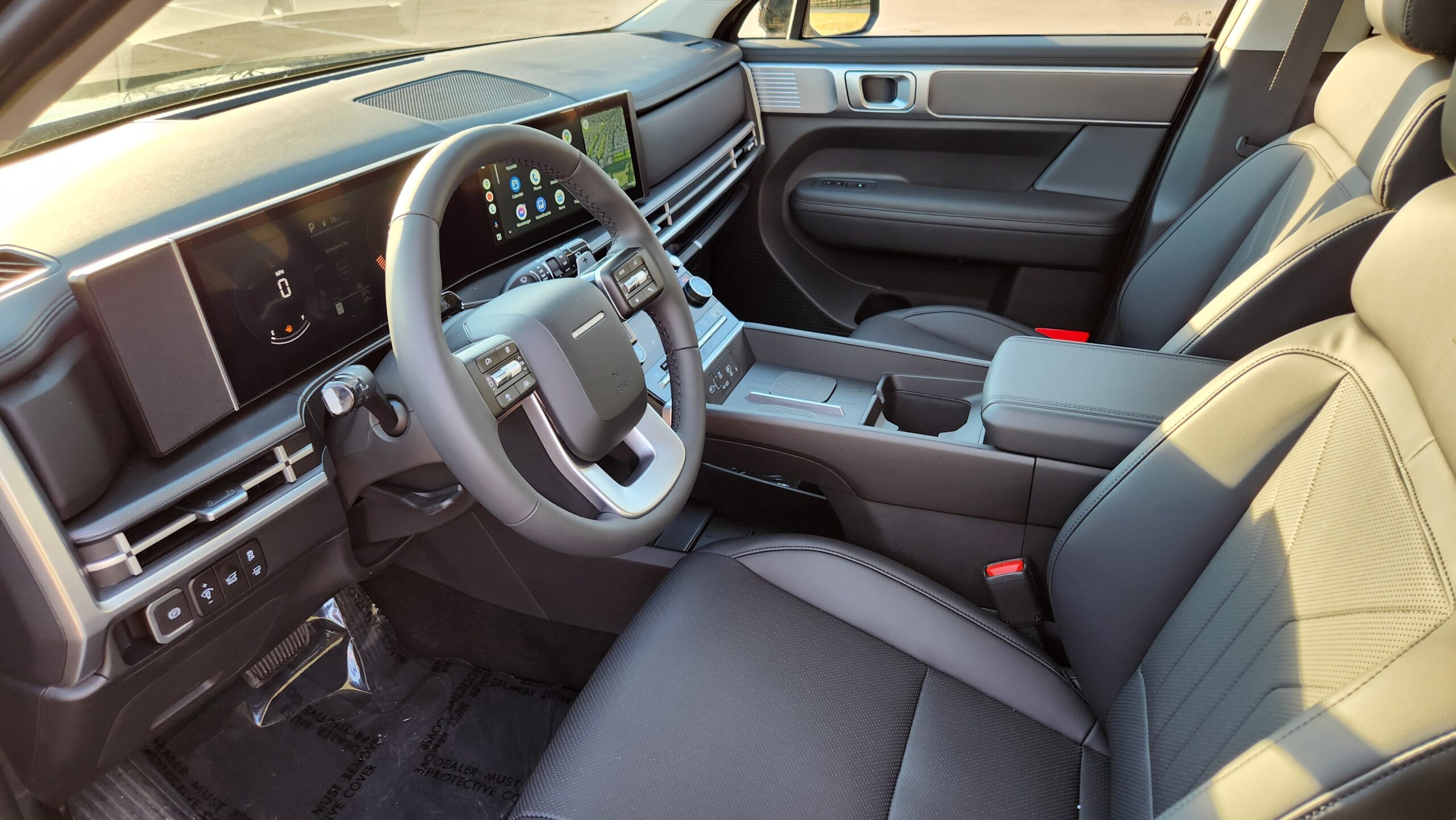
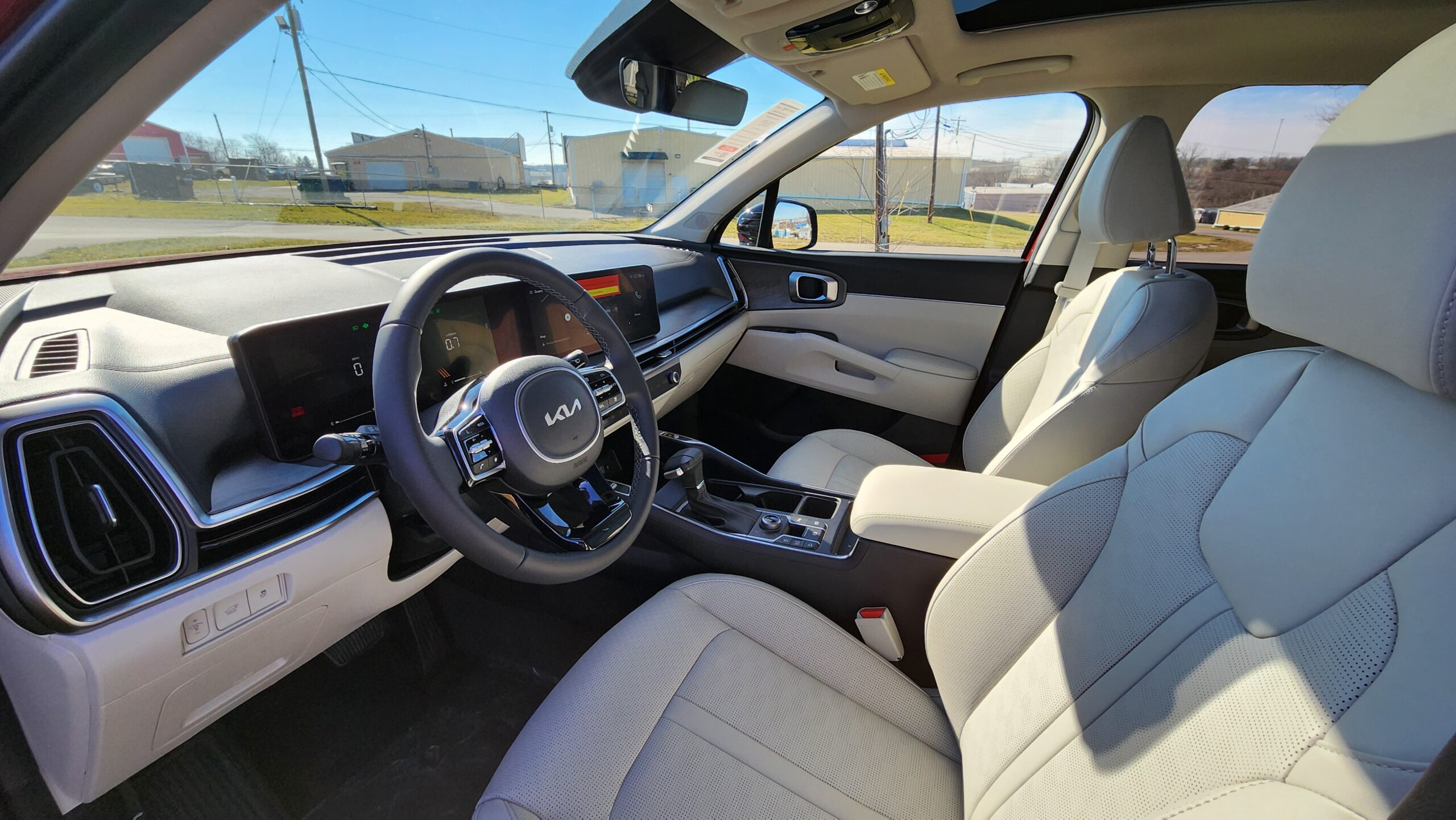
Interior Design
So, walking up to the vehicles, even though both get new fobs this year, they still retain standard smart entry, remote start, and available phone-as-key. What is a little different is that the Sorento does not have a sensor behind the door handle to unlock.
Now after you open the doors, you’ll find out that the interior designs look just as different as the exteriors.
But before we get into all the individual features, let’s talk seating. These mid-level trims come with very realistic feeling faux leather seats with heating and 10-ways of power adjustment. Extremely premium features like massage are offered on the top Santa Fe Calligraphy.
Now let’s fully climb inside and talk about the major category of material quality. Both these two seriously impress us with quality selections even on these more affordable trims. We have leatherette and padded plastic over pretty much everything you touch in the day-to-day, and anything that’s not padded, still feels very solid without any gaps or creaking when pushed on.
After startup, you’ll see one of the things that both these models added for 2024: dual screen arrangements. While these lower models don’t have the full customization that top trims offer, they still have an upscale look.
Coming back to the steering wheels, besides the fact that one of them look exactly like a Land Rover, features are the same with leatherette wrapping and manual adjustment.
Storage and Technology
Now if you get excited about interior storage like we do, this next section is going to be a lot of fun. That’s because Hyundai has really gone all out with this new Santa Fe, adding several additional storage areas over the already-good Sorento. The center console can store 24 donuts vs. 16, we have deep cupholders, dual pads for phones, a huge center pass through and even two passenger storage shelfs.
Both models have one wireless phone charging pad.
Some of the reason for that extra space is the shifter being a new electronic column-mounted one instead of a traditional one in the Sorento. Based on our experience and commenters, the Hyundai shifter is hard to get used to, but once you get into reverse, both have regular cameras and rear parking sensors.
Normally, we can breeze past the climate controls but for 2024, Kia has added the multi-function buttons which can serve for both climate and audio adjustments. Santa Fe also adds a touch panel for some controls but for the main temp adjustment, they both have knobs.
And now let’s turn the volume knobs to sample the audio systems.
Both: 6-speaker standard audio systems
And now that brings us to the infotainment systems, which are improved dramatically for 2024. Both models now have 12.3-inch displays with the latest software, that is much more responsive. We have new wireless ACP and AA as well, which is a big deal for a lot of people.
And lastly up front, the Sorento has an auto-dimming mirror, and more importantly, it includes a panoramic sunroof at this price point vs. a standard-sized unit on the Santa Fe.
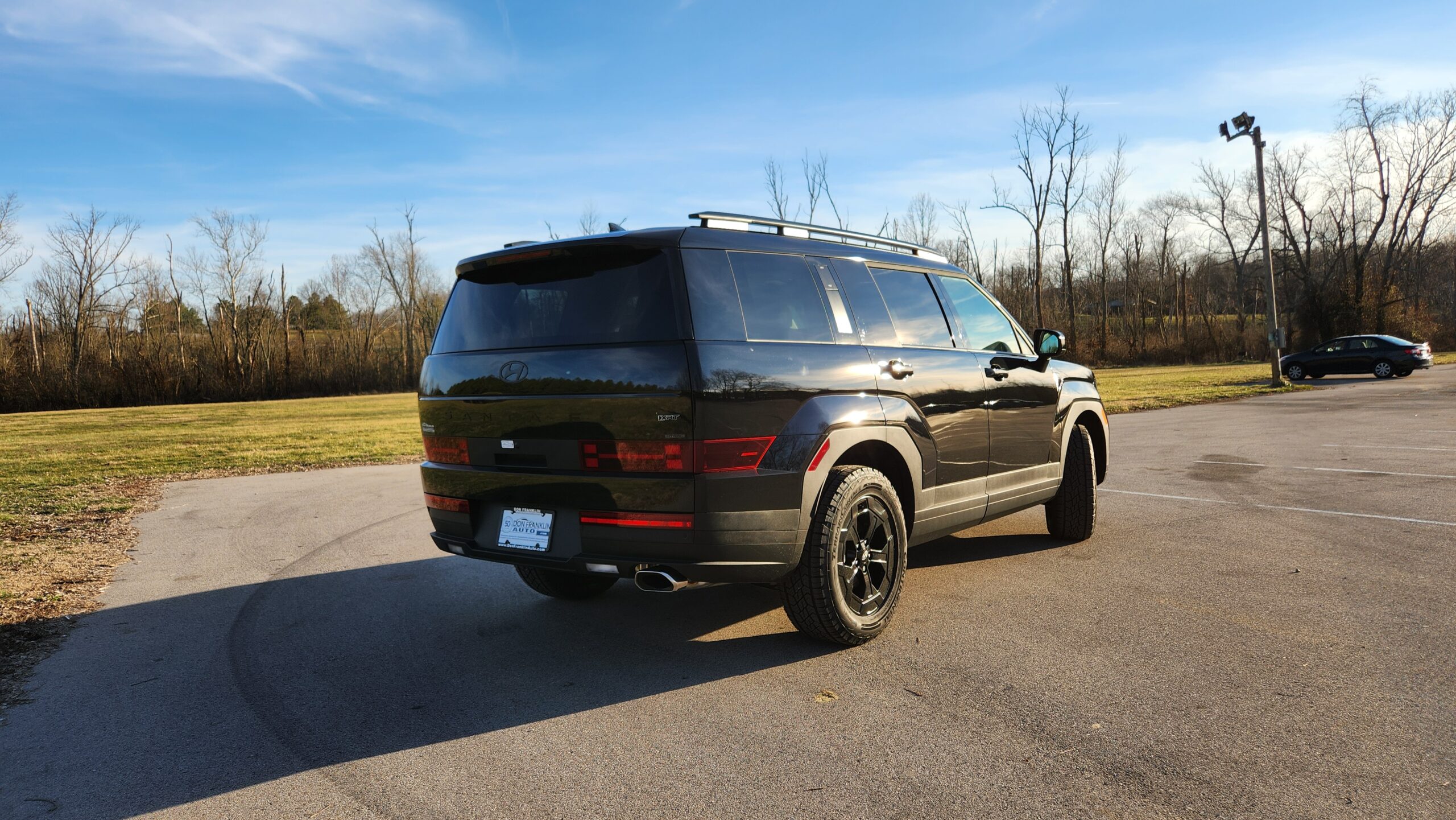
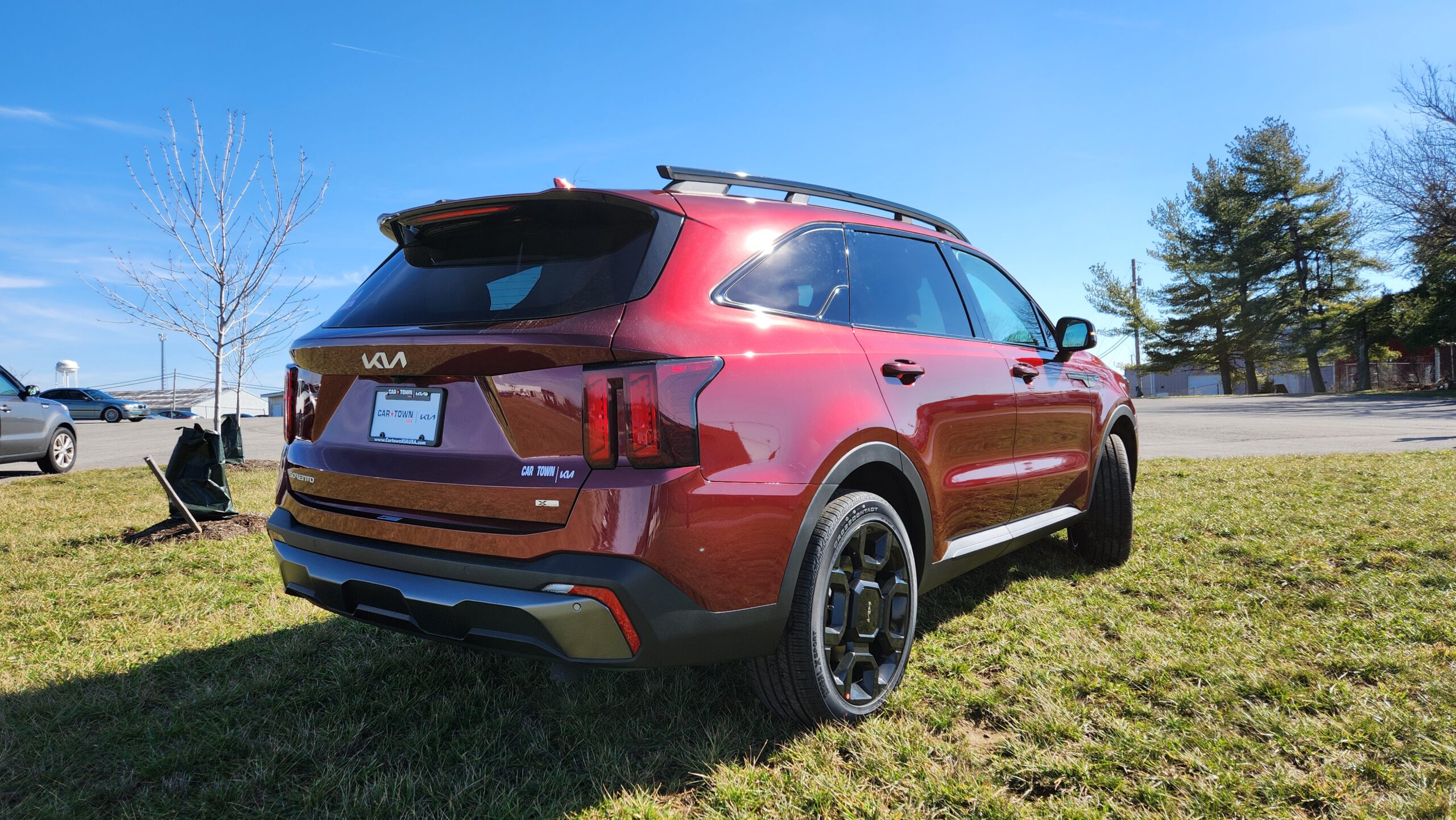
Rear Seats and Cargo
Alright, now it’s time to dig into the equally important rear seats and cargo areas. Starting with the 2nd row measurements, they are very similar, as you’d expect for models with the same basic underpinnings. Santa Fe technically has the advantage now but by less than the 5% difference required to score a point.
Santa Fe: Legroom: 42.3-inches | Headroom: 40.6-inches
Sorento: Legroom: 41.7-in | Headroom: 39.1-inches
Amenities-wise, lower trims won’t have quite as much but both will still include rear vents and USB ports, as well as storage or 12v outlets respectively.
You probably noticed that today’s testers have different seating configurations. Some people prefer captain’s chairs, and some prefer bench, so we won’t score anything here, but just be aware that only the 2 lowest trims of Sorento have bench seating, while all the trims of Santa Fe do, except the Calligraphy.
Regardless, both have 2 more seats located in the third rows. As I mentioned earlier, this is a new standard feature for the Santa Fe over the previous generation, and you might be surprised to find out that space is very similar to that of a Toyota Highlander. While best for kids, adults can fit back here, and while all the measures are under a 5% difference, the extra 2.5% of headroom in the boxy Santa Fe is noticeable.
- Santa Fe: Legroom: 29.9-in | Headroom: 37.7-in
- Sorento: Legroom: 29.6-in | Headroom: 36.8-in
Both have third row vents, power connections and cupholders, but only the Hyundai has a knob to adjust the climate.
Now moving around to the rear, both have smart opening tailgates, and once they open up, this is where the boxy shape of the Hyundai really starts to help out. It can hold 14.7% more cargo with the third row in place, although as the seats fold down, the advantage shrinks to just over 5% behind the second row and as a maximum behind the first row.
Santa Fe: 14.6 cubic feet behind 3rd row | 40.5 cubic feet behind 2nd row | 79.6 cubic feet max
Sorento: 12.6 cubic feet behind 3rd row | 38.5 cubic feet behind 2nd row | 75.5 MAX cubic feet
Both models have manual folding third row seats, power releases for the second rows and spare tires. Hyundai says that the reason why went with the lower mounted tailgate was because they wanted the tailgate to have a wider opening, and we confirmed with our own measurements that it has 49-inches of width compared to 43 in the Sorento.
Alrighty, so that it for the interiors, but now let’s take this fight to the streets!
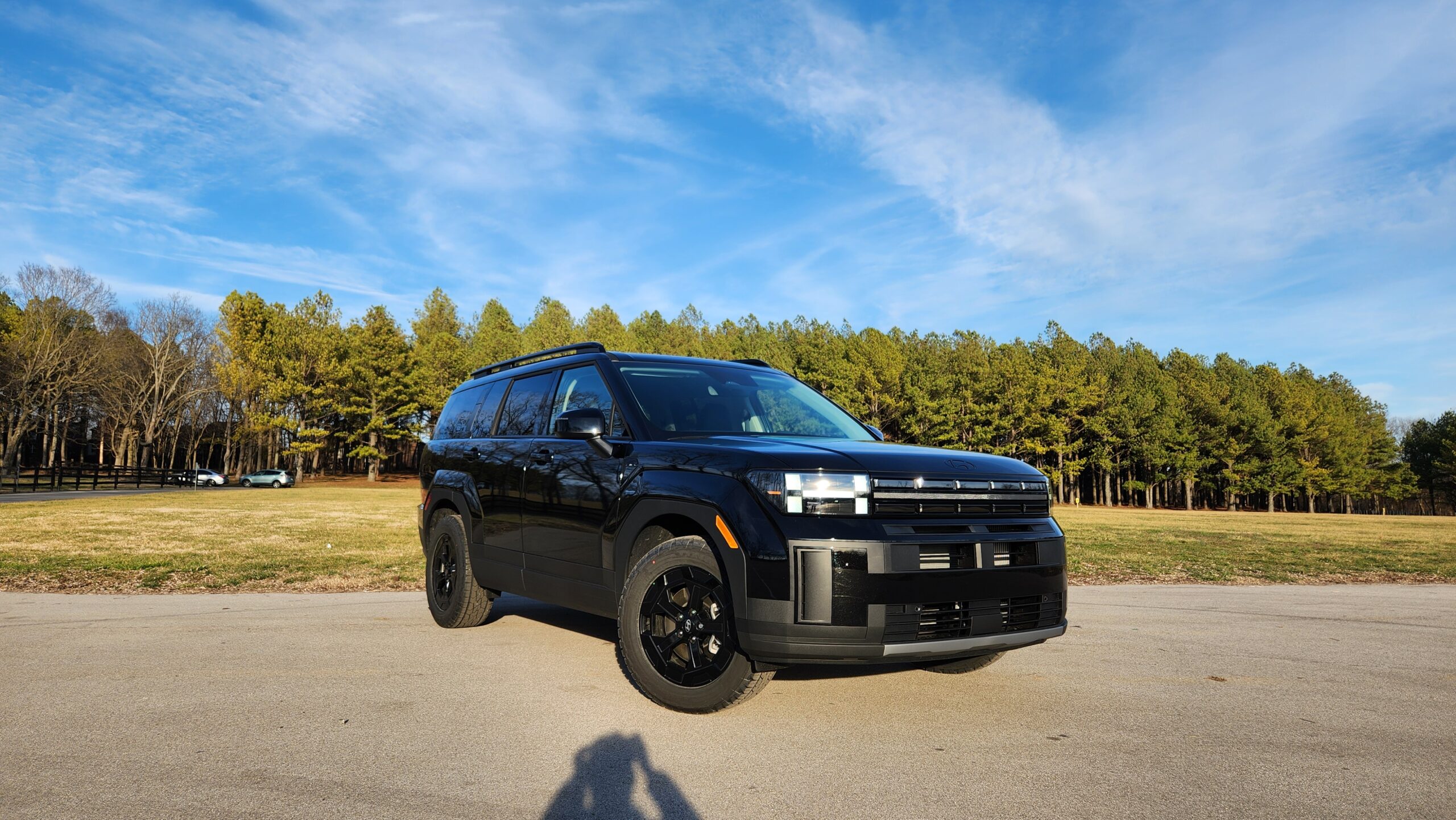
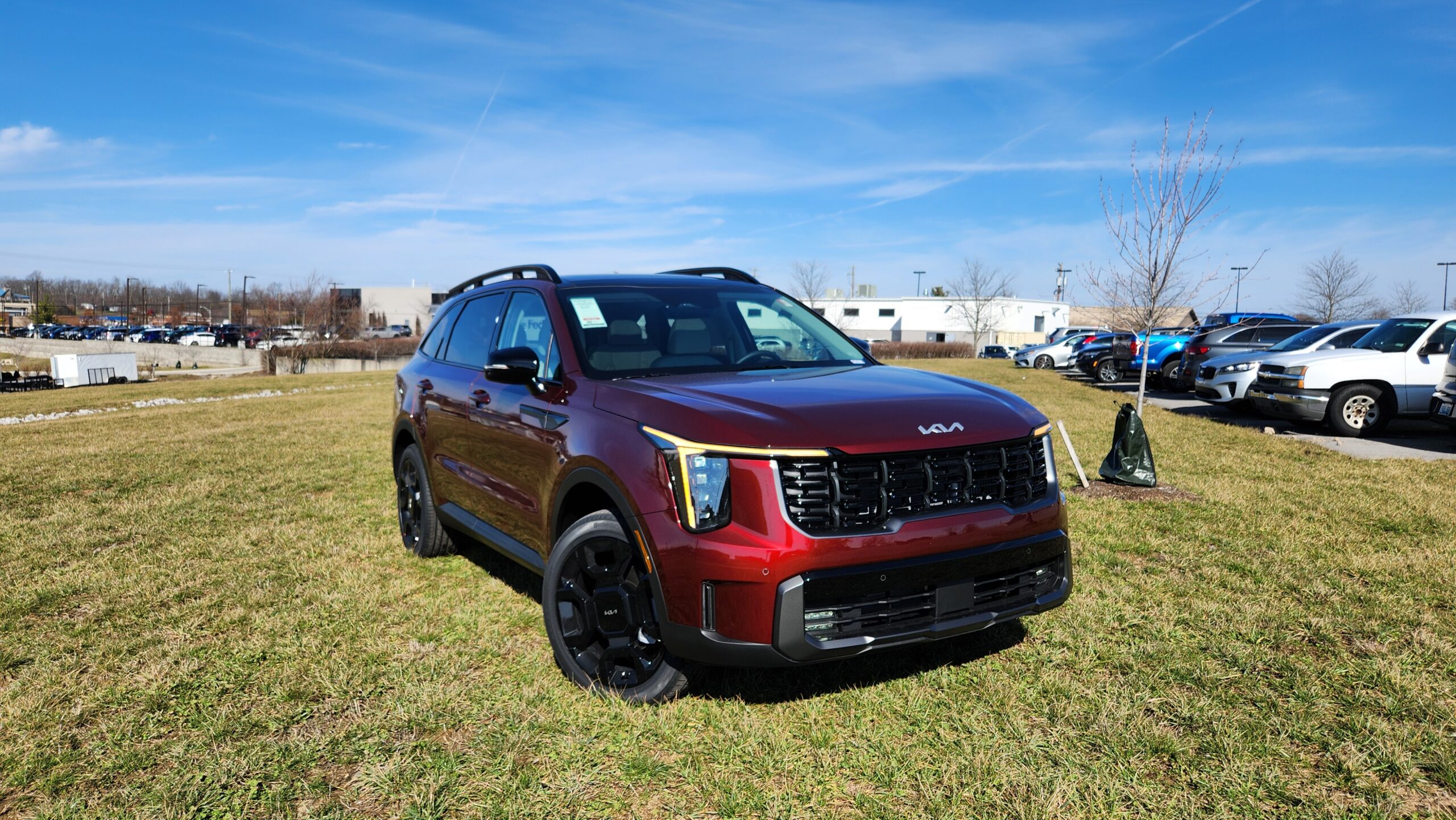
Powertrains
While most things you can see are quite different between these two models, what you cannot see is much more similar. That starts with the basic platforms and continues to the powertrains, where both are rocking the same 2.5L Turbo 4-cylinder, mated to an 8-speed dual-clutch and AWD systems. Even though there is a tiny discrepancy in the rated horsepower, they accelerate the same and both feel crisp.
Both: 2.5L Turbo I-4: 277 hp (281 hp in Sorento) | 311 lb.ft of torque
Test Drive and Fuel Economy
Let’s talk a little bit about driving dynamics and comfort. Between the two of them, the Sorento is going to have the sportier feel. It is tuned be a bit firmer, and as such it has less body roll around corners, but also rides somewhat firmer than the Santa Fe. These are pretty small differences though, so don’t take that as either of them being uncomfortable.
Its also important to have serene environments free of loud noises, and while both of them do a good job here, the Sorento beats the Hyundai by greater than 1 dB which is considered a noticeable amount to the average adult.
Sorento: 55.5 dB @ 55 MPH
Santa Fe: 56.9 dB @ 55 MPH
And finally, for fuel economy, they are very similar although the Sorento’s smoother design probably helps it get the slight advantage. Both also have available hybrid models which should achieve upper 30 MPG figures, but only Sorento offers a Plug-in Hybrid variant.
Santa Fe AWD: 20/28/23 MPG
Sorento AWD: 21/28/24 MPG
2024 Hyundai Santa Fe vs. 2024 Kia Sorento winner!
Well, that’s it for another comparison! These two are siblings but they are more different than ever. Let’s summarize to figure out which one should be your personal winner.
Santa Fe:
- You love the boxy classic SUV design
- You want maximum cargo capacity
- Tons of storage cubbies
Sorento:
- You prefer the streamlined and less controversial design
- Quieter sound level reading
- Fog lamps
- Traditional shifter
What do you guys think? Let us know below!
If you enjoyed this comparison, we’d really appreciate if you’d help us out by subscribing so we can keep making more comparison videos like these, as well as Full Reviews, auto show coverage and more! We’ll see you next time as we sample more of the latest automotive delicacies!

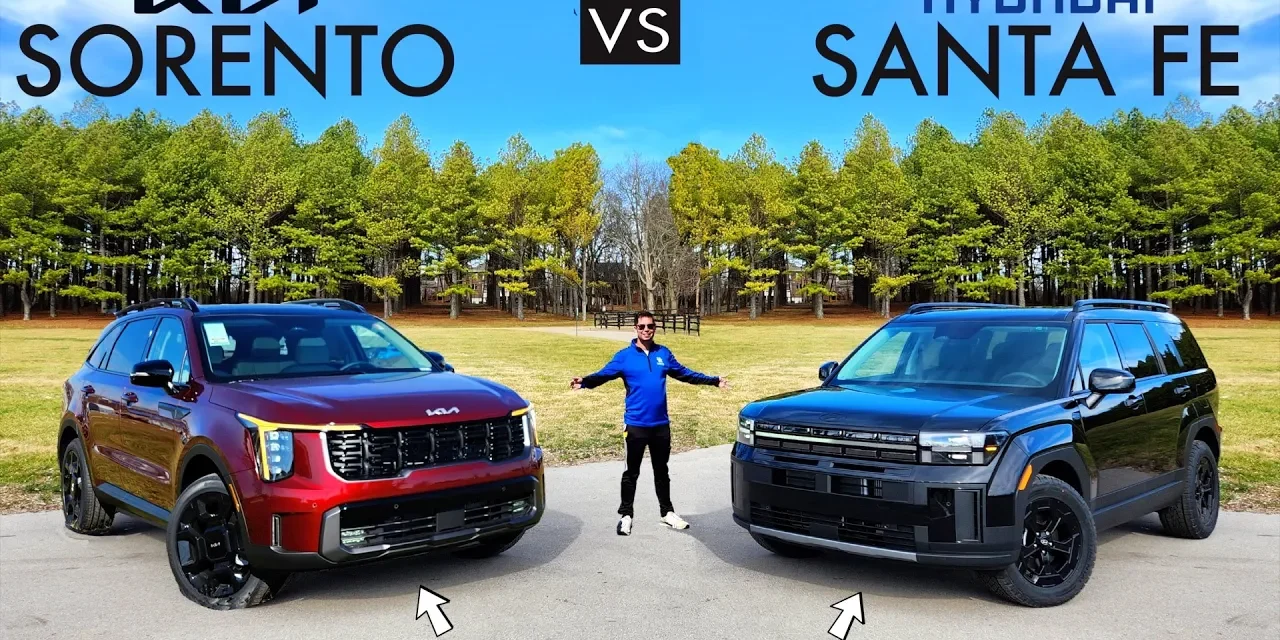
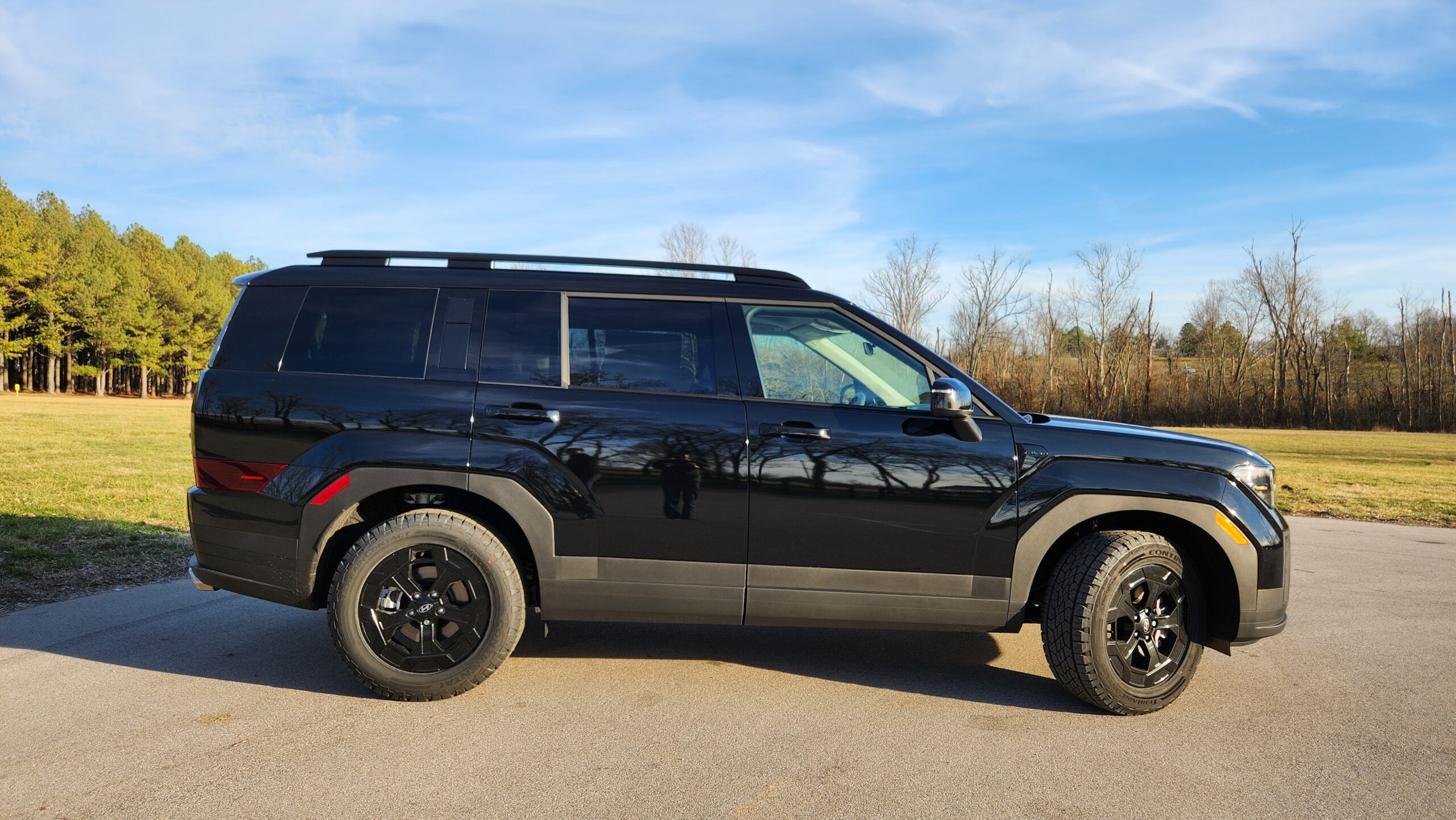
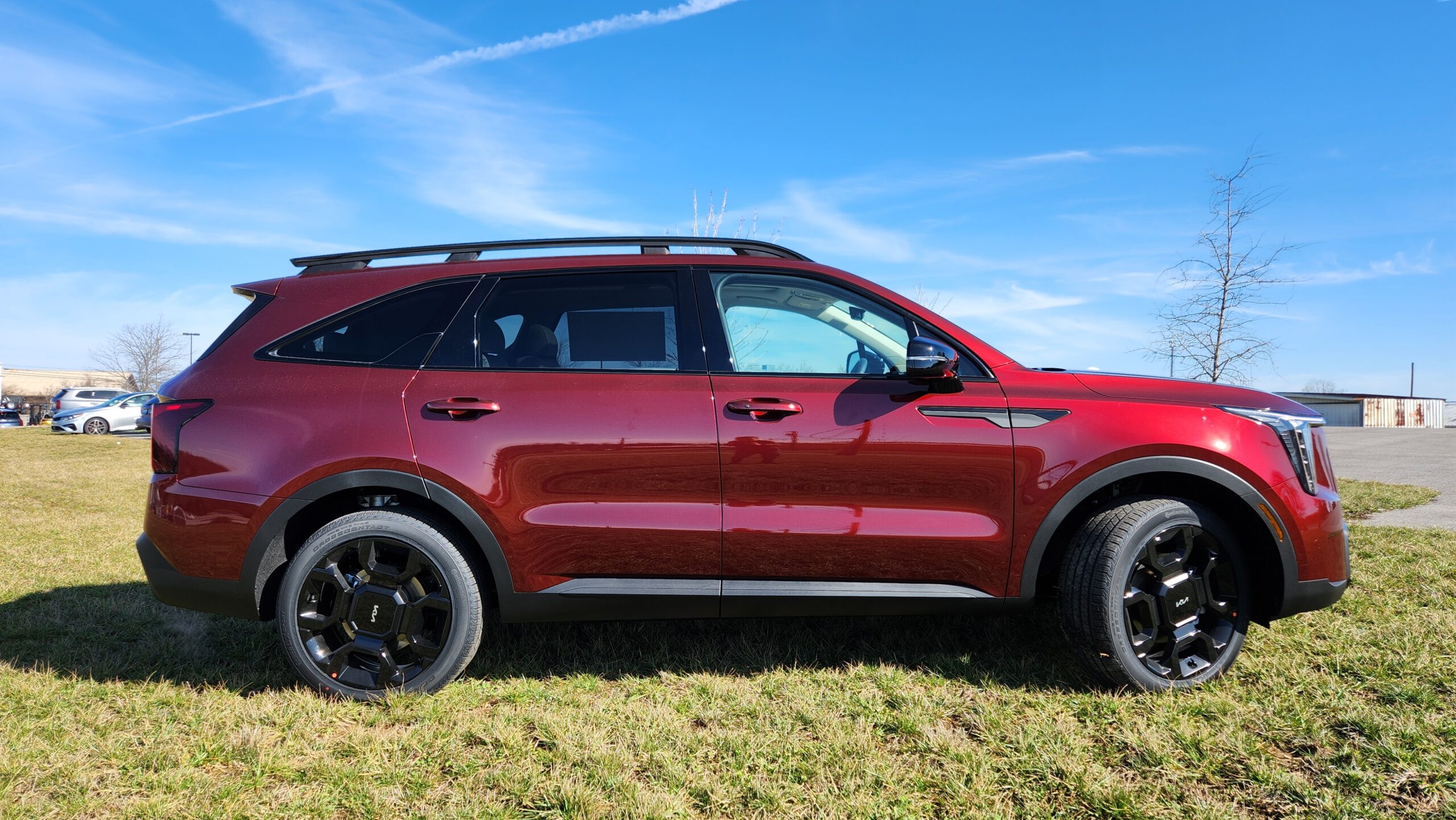


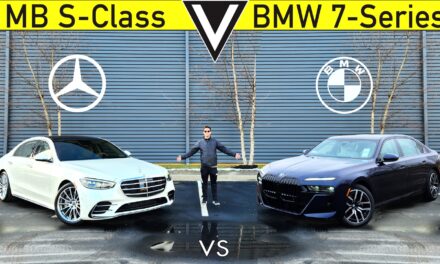







Recent Comments